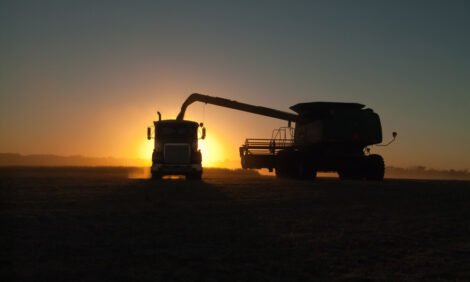



Market Preview: Price Spreads Exacerbated
US - Weekly US Market Preview provided by Steve R. Meyer, Ph.D., Paragon Economics, Inc.Judging by some e-mails and phone calls I have received recently, it is time once again to discuss retail pork prices and price spreads. This topic always surfaces when hog prices fall sharply or remain low for an extended period of time – especially if retail pork prices don’t follow suit. The latter is virtually always the case!
Is it fair for producers to suffer and “middlemen” to make more money? No, not really. But neither is it fair for producers to profit during many past summers when margins for middlemen were reduced. That happens less frequently than does a decline in hog values, but just what is fair?
That’s a difficult question to answer, especially when we know far less about packers’, processors’ and retailers’ costs than we know about producers’ costs. That results in us judging gross profits, not net profits, as we should.
Here’s what we know about this situation is:
- The USDA retail price series is notoriously “sticky downward,” which means that it very seldom shows a lower retail price and, when it does, that decline is small. One reason is that retail prices indeed rise and are more heavily impacted by general inflation than are farm-level or wholesale prices because they include more cost items (labor, transportation, packaging, real estate, etc.) that inflate. But this “stickiness” is also a fault of the data collected by the Bureau of Labor Statistics (BLS): They do not gather sales quantities. More units are sold at lower prices, but the lower prices are not more heavily weighted in the average because the BLS data gatherers do not know how much was sold at each price. This is especially a problem this year when widespread, heavy pork featuring by retailers has helped move unexpectedly large domestic supplies. USDA says that it will begin to capture scanner-based price and quantity information again this fall, so this problem may be addressed soon. Let’s hope so.
- Farm-level demand is more inelastic than is wholesale-level demand and wholesale-level demand is more inelastic than retail-level demand. I know that sounds like econo-lad gobbledygook, but it is important. It means that a given change in supply causes farm prices to change more than wholesale prices and wholesale prices to change more than retail prices. There is no “right level” of elasticity. It’s sort of like gravity – it doesn’t matter whether you like it or not, it is what it is. But the implications are important: An increase in supply causes farm-level prices to drop by a higher percentage than does retail price, thus increasing the spread. That may be “unfair,” but I think not being able to fly like a bird is unfair, too, but on that issue and many others, it doesn’t matter what I think.
- If the available supply is moving at price X, why should retailers charge anything less than price X? That is the situation now. July saw record-large domestic pork disappearance. June 2009 was the second largest June ever. I believe August and September will follow suit. Cold storage inventories are not burdensome and are actually declining. Why should retailers ask for less?
- No dollar reaches a producer that does not pass through the coffers of a retailer or a foodservice outlet of some variety. Is there a better chance for a dollar to reach a producer if the total number of dollars is reduced? I don’t think so. While we may not like it when many of those dollars stay in the middlemen’s hands, the fact that the dollars are available – i.e., that consumers are willing to part with them to obtain pork products – is a good thing.
- The less the industry must cut retail prices to keep product moving, the easier it will be to push wholesale and farm prices upward when supplies fall. Look at Figure 1. Notice that the space between the retail price and both the wholesale price and farm price is sort of an accordion – absorbing higher prices and capturing margin when upstream prices fall. When hog supplies fall – and they will eventually do so – a high retail price will allow wholesale and farm level prices to bounce back quickly. Otherwise, the entire price structure would have to be lifted, often over the objections of angry housewives and other meat buyers. That is a much more difficult task and will take longer to accomplish, thus slowing a return to farm-level profits.

So should we all be happy with wider price spreads? No. But we also need to realize why they occur and that the medicine needed to cure the “problem” may make things worse.
Everyone needs to make sure the downstream markets are competitive and, thus, provide incentives for firms at all levels to offer consumers the best value possible. Still, the current issue is too much pork on the market to command prices that will cover today’s much higher costs of production. Producers need to get to the task of reducing supplies if they want spreads to narrow and prices to improve.










